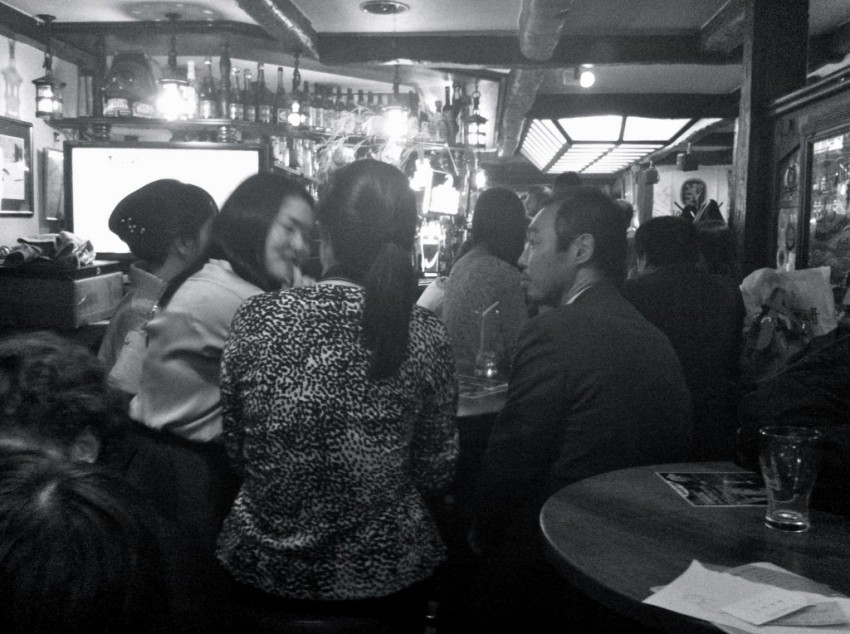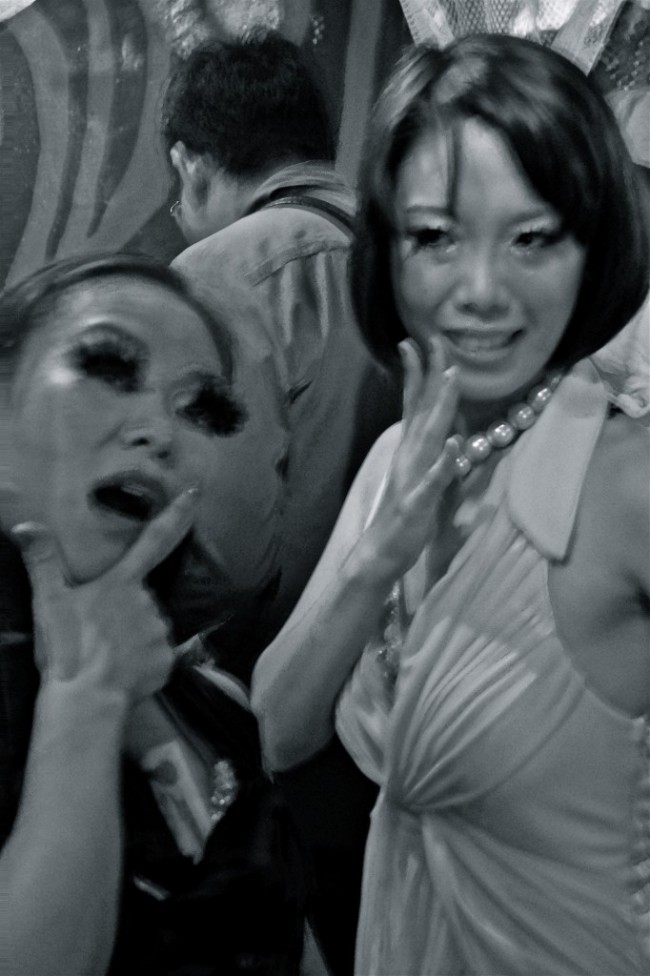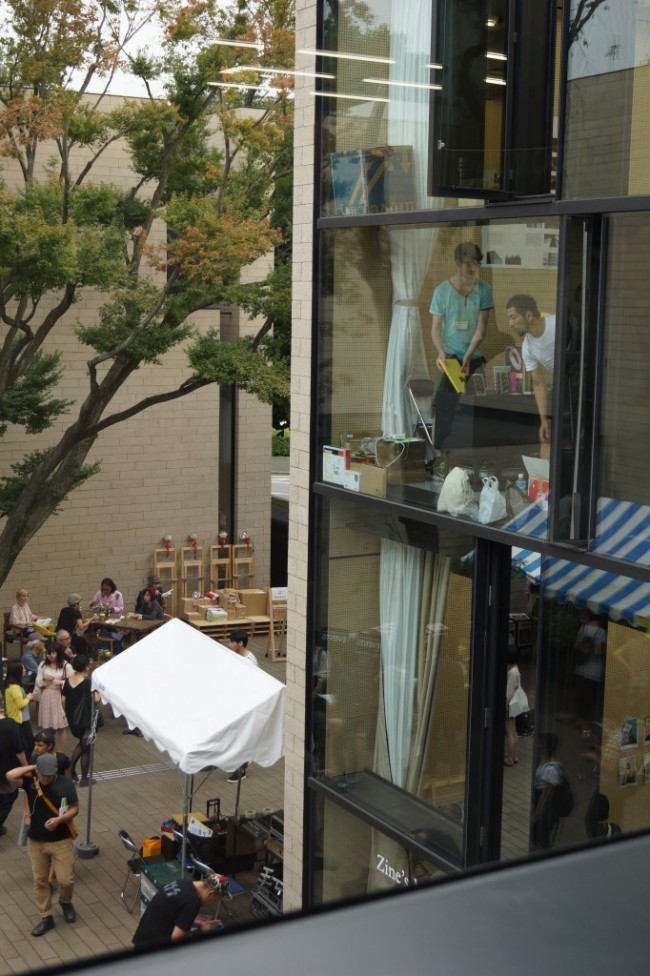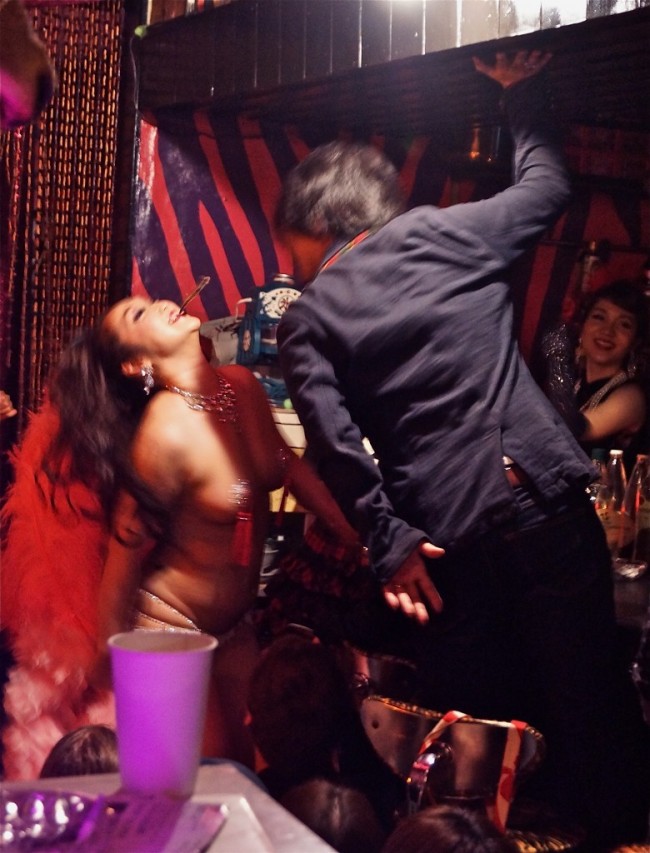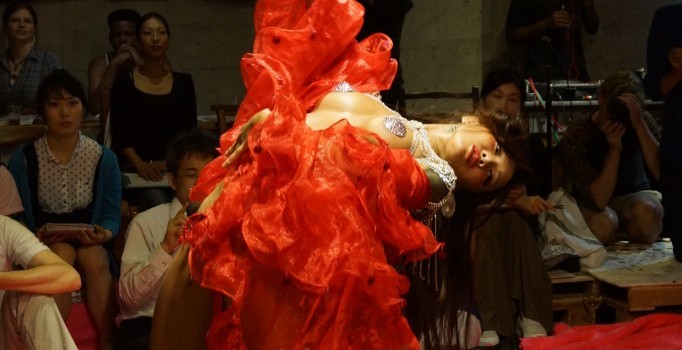Category: Friends
Odile: Black Swan or Black Cat
Tokyo Art Book Fair
Burlesque Night! 女性上位時代 Vol.6
Art Byte Group at Tokyo Art Fair
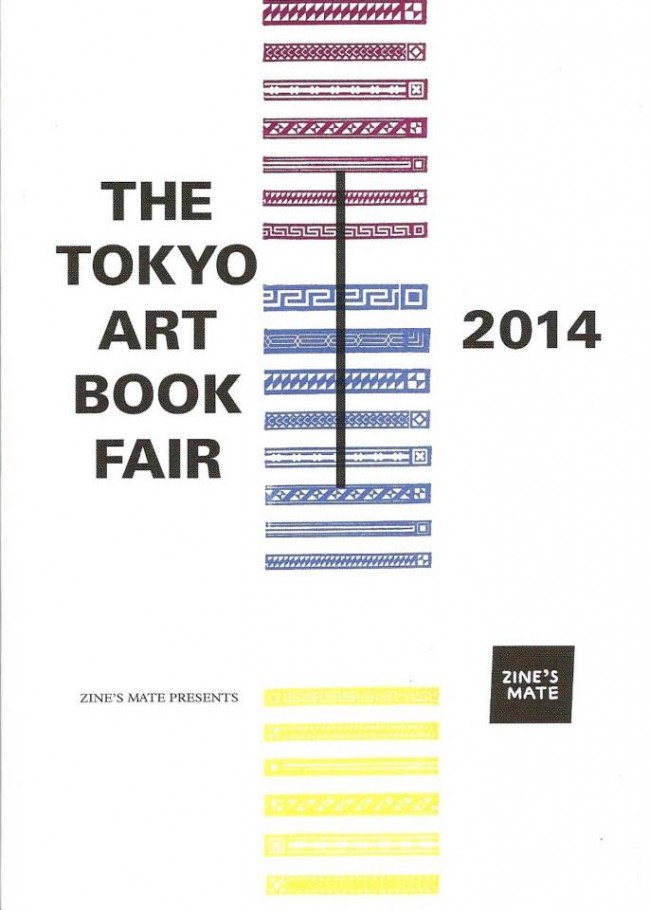
Nine artists from the Tokyo-based Art Byte Critique group showed their mettle at the Tokyo Art Book Fair last week.
From Flamingo Road to the Anti-Art School
SiTuRAY CATS
 Although not directly related to the topic of art, playing music and the logistics involved in arranging a gig have a lot in common with making art and arranging a show. This topic actually came up several times this week with musician friends lamenting how things are done in Japan. Both artists and musicians have to rent the space, whereas the gallery or bar would pay the artists in North America. Both musicians and artists in Japan are seen only by a small handful of friends, family, fans, and the occasional stranger who is not acquainted with your work. Often these rental spaces are quite small, too. The staff at these spaces help but the onus is on the artist to find someone or to be the person who handles inquiries and any cash, makes and distributes promotional material, and just generally supervises matters. It is really frustrating for everybody.
Although not directly related to the topic of art, playing music and the logistics involved in arranging a gig have a lot in common with making art and arranging a show. This topic actually came up several times this week with musician friends lamenting how things are done in Japan. Both artists and musicians have to rent the space, whereas the gallery or bar would pay the artists in North America. Both musicians and artists in Japan are seen only by a small handful of friends, family, fans, and the occasional stranger who is not acquainted with your work. Often these rental spaces are quite small, too. The staff at these spaces help but the onus is on the artist to find someone or to be the person who handles inquiries and any cash, makes and distributes promotional material, and just generally supervises matters. It is really frustrating for everybody.
The other weekend I went to see a new friend’s band play at a small venue called Ogikubo Club Doctor. The band’s name is the Situray Cats (pronounced the Shitsurei Cats in Japanese), but they purposefully chose the spelling to show that they are in essence a Stray Cats double cover band. (Click the link to see a video of a performance.) What? A double cover band. They sing songs by the Stray Cats in English and then the same song in Japanese. That was the explanation I was given, but they actually sang a wide variety of songs. The crowd loved them! One reason was that they sang rockabilly versions of J-pop songs as well as rockabilly classics. Wardrobe, hair, movement, everything was over the top for entertainment’s sake. I could imagine how a college crowd would go nuts for them and how they could fill the dance floor.
<Screeching halt!>
Wait! I am in Japan. Things do not work like that here. Back to reality.
These guys have to have joint performances to split the costs. It was a triple bill: the 59 Rockers, the Situray Cats, and the Japs. For the same reasons, many artists participate in group shows. The venue, or “live house” in Japanese, was a tiny space in the basement of a multi-story building near one of the smaller stations in Tokyo. Without Google Maps, these places would be very hard to find. Sounds like many of the small art galleries I have been to in Japan. The lead vocalist of the Situray Cats and his girlfriend sold merchandise to raise money and to self-promote the band. Without asking, they gave me a T-shirt and comb because they knew that I might reach a different audience. They were going to give me several T-shirts, but I declined since I knew that they were paying for them out of their own pockets. Sound like many artists you know giving away artwork or postcards, gift cards, or other things as presents? Everybody in the small crowd obviously knew each other, and people took on various roles to help out. Need a DJ? Check. Need somebody to document the event? Check. Handle merchandise? Check. Buy some of the merchandise? Friends are always willing to chip in. Fill in on vocals? Not a problem.
What is different here in Japan? Night life is different here. I remember being amazed that adults were going bowling on a Friday night instead of going to a club. Yep, bowling. That has changed a bit in recent years, but most people do not do the clubs. Even when they do, most clubs do not have live music.  Places like the Blue Note are more like dinner clubs where you can hear big-name performers while you dine and drink for a hefty price. Many cities might have one place where young bands can thrash things out for a rental fee. Those places can attract a few (very few) young people. Monthly magazines, like Tokyo Walker or others in the series, or the amazing and often updated travel magazines, like Rurubu, do not feature a list of galleries or bars with featured artists. Tokyo Art Beat, a bilingual app for smart phones as well as a website, has probably made a huge impact on Tokyo galleries, but no such service is available for smaller cities. in the big city, you can check the Tokyo Gig Guide but I do not think it is well known. People go out to eat and drink; they go to Karaoke in small, private rooms called karaoke boxes. Men are likely to go to hostess bars, snacks (similar to a small, private bar), or other shady places. College kids do not seem to have the same kinds of recreation. Yes, many are working but most seem to be interested in their clubs. Yes, university has after-school clubs just like high schools and companies do. These also serve as social clubs to meet new people, including those of the opposite sex, at your university. It probably does not help that dancing is actually outlawed at clubs that serve alcohol and offer loud music. I could go on and on, but every person and every city are of course different. What to do? Well, maybe some Japanese artists have decided that the only way that they can make a living is to go elsewhere. Look what Ryuichi Sakamoto, Shonen Knife, Takashi Murakami, and Yoshitomo Nara did.
Places like the Blue Note are more like dinner clubs where you can hear big-name performers while you dine and drink for a hefty price. Many cities might have one place where young bands can thrash things out for a rental fee. Those places can attract a few (very few) young people. Monthly magazines, like Tokyo Walker or others in the series, or the amazing and often updated travel magazines, like Rurubu, do not feature a list of galleries or bars with featured artists. Tokyo Art Beat, a bilingual app for smart phones as well as a website, has probably made a huge impact on Tokyo galleries, but no such service is available for smaller cities. in the big city, you can check the Tokyo Gig Guide but I do not think it is well known. People go out to eat and drink; they go to Karaoke in small, private rooms called karaoke boxes. Men are likely to go to hostess bars, snacks (similar to a small, private bar), or other shady places. College kids do not seem to have the same kinds of recreation. Yes, many are working but most seem to be interested in their clubs. Yes, university has after-school clubs just like high schools and companies do. These also serve as social clubs to meet new people, including those of the opposite sex, at your university. It probably does not help that dancing is actually outlawed at clubs that serve alcohol and offer loud music. I could go on and on, but every person and every city are of course different. What to do? Well, maybe some Japanese artists have decided that the only way that they can make a living is to go elsewhere. Look what Ryuichi Sakamoto, Shonen Knife, Takashi Murakami, and Yoshitomo Nara did.
Here are the 59 Rockers. They were fantastic! Check out their classic suits and ties.
And, of course, the Situray Cats featuring Nago on vocals. You can tell that all of the band members get along and enjoy hamming it up for each other and for the audience.
A towel with a cartoon version of a popular comedian makes a great as well as cheap present for the audience.
They also do a rockabilly cover of UFO by the classic J-pop duo, Pink Lady. That was a big hit in Japan and guaranteed to get a reaction from any crowd of any age.
The third band of the evening was the Jap’s followed by people from all of the bands and John R.S. from the Space Cats on stage at the same time for the finale. Don’t ask me why they have an apostrophe in their name or why they chose a racist name. To be fair, they might not even know it is racist. Many people I have met think it is a cute nickname for Japanese people.
 John R.S. from the Space Cats with the Jap’s
John R.S. from the Space Cats with the Jap’s
It was a bit scary looking at these photos afterwards and seeing the dark cloud hover over the lead singer of the Jap’s. I wonder what that means… If he was a star in a cheesy 1950’s film, you know that he probably sold his soul for rock’n’roll, right?
The Finale
 The club looked like many small clubs found worldwide: small, dark, low ceilings, and posters on the wall. The clientele dressed up for the event. If the event were larger, I might have been less conspicuous and more able to capture people in casual poses. As it was, the audience was still fun to watch.
The club looked like many small clubs found worldwide: small, dark, low ceilings, and posters on the wall. The clientele dressed up for the event. If the event were larger, I might have been less conspicuous and more able to capture people in casual poses. As it was, the audience was still fun to watch.
 And, yes! They did dance! Nobody called the cops, so I guess they were safe. That woman in the black-and-white top might look shy but she cut up a rug with the lead vocalist of the 59 Rockers. They were amazing to watch! They were not the only ones either. It was great!
And, yes! They did dance! Nobody called the cops, so I guess they were safe. That woman in the black-and-white top might look shy but she cut up a rug with the lead vocalist of the 59 Rockers. They were amazing to watch! They were not the only ones either. It was great!
Fragile Memories
Because I remembered Arthur Huang’s Memory Walks from Art Byte’s show at Hagiso, I popped by the opening and took a few pictures. The photos were gorgeous, and I still love the concept that he had for the drawings on the eggs. (I do not know how he stores them so they do not get smashed. They are incredibly fragile, right?) I will let Huang explain in his own words what he was doing.
“Tokyo Memory Walks” are drawings on eggshells which represent a walk that I have taken this year – such as going from home to the convenience store, the train station to a museum, or a bus stop to work. These drawings are made one day or more after each walk.
For each drawing, I start at the top of the eggshell and trace the route that I took from memory. In the course of drawing, I also use symbols to indicate markers that I encounter along the walk, such as stairs, elevators, or doors. One string of eggshells represents one day of walks. The eggs are arranged from morning to evening starting from top to bottom.
“Kojimachi Interstices” is a series of 57 composite digital images created while documenting the alleyways between buildings around Kojimachi Collection, Kojimachi Station, and the surrounding Kojimachi area. Alleyways are often overlooked as we go about our daily lives. Each composite image is made up of layers of photographs for all the alleyways in a block. The layers of photographs are digitally manipulated by altering the transparency of each layer to transform these overlooked spaces into something new. For this exhibition, fourteen of the “Kojimachi Interstices” are installed as large format inkjet prints representing different parts of the Kojimachi area. The entire series can be viewed in the “Kojimachi Interstices” portfolio or upon request.
The venue was obviously not the right kind of space to show off the photos but it was part of the neighbourhood that he recorded in these pieces. Community support is good, right?
My snapshot has added a few more layers of images to his photos. The layers are intricate and surprisingly delicate for layers and layers of photos of urban dwellings. He supposedly had a hard time deciding between the matte and the glossy paper, but the glossy was the right decision. It is interesting how people now try to replicate what the see on their computer screens. That might have been one of the original reasons for his choice but I think it helped the photos pop off the walls in that crowded and busy space.
 Friends and other local artists, including Lori Ono, Koubou Deeanna, and Ruriko Clarkson, were there to offer support.
Friends and other local artists, including Lori Ono, Koubou Deeanna, and Ruriko Clarkson, were there to offer support.
And Huang was there to chat and answer any questions. If you want to try drawing your own walks around Tokyo by memory, he is giving a workshop this weekend on August 23 and 24.
Electric Butterflies Fly at Day
Reina Eto: Sirius About Dogs
Sorry! I could not resist a title that connected Reina Eto‘s love of dogs and her recent rise as a new star on the Tokyo art scene. She would deny this, but both the director of the Face to Face gallery and I agree that she has a bright future. We both met her at the 2014 Tokyo Art Fair and were struck by her unique style in a genre filled with many paintings that look similar to each other. She might be using a traditional method of painting called nihonga, but her work is fresh and contemporary.
For what it is worth, I purposefully took photos that were not exactly straight and cropped them slightly. I did not want to infringe upon her copyright. Anybody who is trying to determine what is a copy will certainly notice that her photos of her artwork will not be trimmed like the ones I am using. I also did not record the titles because I want people to investigate more by themselves. I also did not want to presume how she wanted to present her Japanese titles in the English alphabet or even how she wants them translated. I have simply added phrases to describe what each painting reminds me of.

This is one of my personal favourites. I love the composition and how the friendly nature of the dog is expressed despite our X-ray vision of the dog’s organs.

I want to call this one, “Truffle Dog”, because the dog’s face reminds me of a pig! This one and all of the paintings are quite small. This one is about 12 inches tall if I recall correctly.

This is a slightly closer look at the one of the two dogs racing. You can get a sense of its size in contrast with her face. Marsha Whiddon from Winnipeg once used dogs to represent the darker, animal nature of humans; Reina Eto paints dogs because she loves them and is familiar with their motion.She shows their inner organs to illustrate their inner mechanics and is not interested in trendy zombies. She tried painting horses, but their beauty is still too unfamiliar to her. Maybe in the future?


Reina Eto has also started painting humans in motion. Their bodies are healthy and powerful; they do not like zombies although we can see inside them. No body parts are falling off. They are in the pink of good health!

This one reminds me of shaman paintings down by artists from the First Nations in Canada, such as those of Inuit or Ojibway descent. One of the interesting things about this painting is that the black-and-white fur is made from iron filings. Eto graduated from art school but did not formally study nihonga painting. Perhaps because of that she is freer to break the rules. I have seen this happen before when painters enter a printmaking studio. Because it is not their major field of study, they are less concerned with process and more concerned with the final image. This might drive some technicians crazy, but the results are beautiful! This one has been growing on me.
Reina Eto is currently showing at the Face to Face gallery with two other young nihonga painters. Their paintings are also small but a bit more traditional than Eto’s work.

Doesn’t this one by Kyoko Enokidani remind you of Monet’s water lilies? This one is the most abstract. Her other paintings combine urban landscapes at night in similar blue shades.
Kansui Abe’s paintings seem traditional at first glance and remind you of landscapes that you might see in collections in Kyoto, but then you realize that fish are swimming between those mountains. That is a nice surprise!



Thank you to Kiyoshi Yamamoto and Reina Eto for an enjoyable Saturday afternoon filled with interesting and informative conversation. For those who want to take a look, I am afraid that Sunday, June 1, 2014 is your last chance to see this group show at the Face to Face gallery in Kichijoji, Tokyo. Don’t worry! Reina Eto plans to have a solo show here in the near future. If you plan to start a Japanese art collection, her prices are a bargain!
